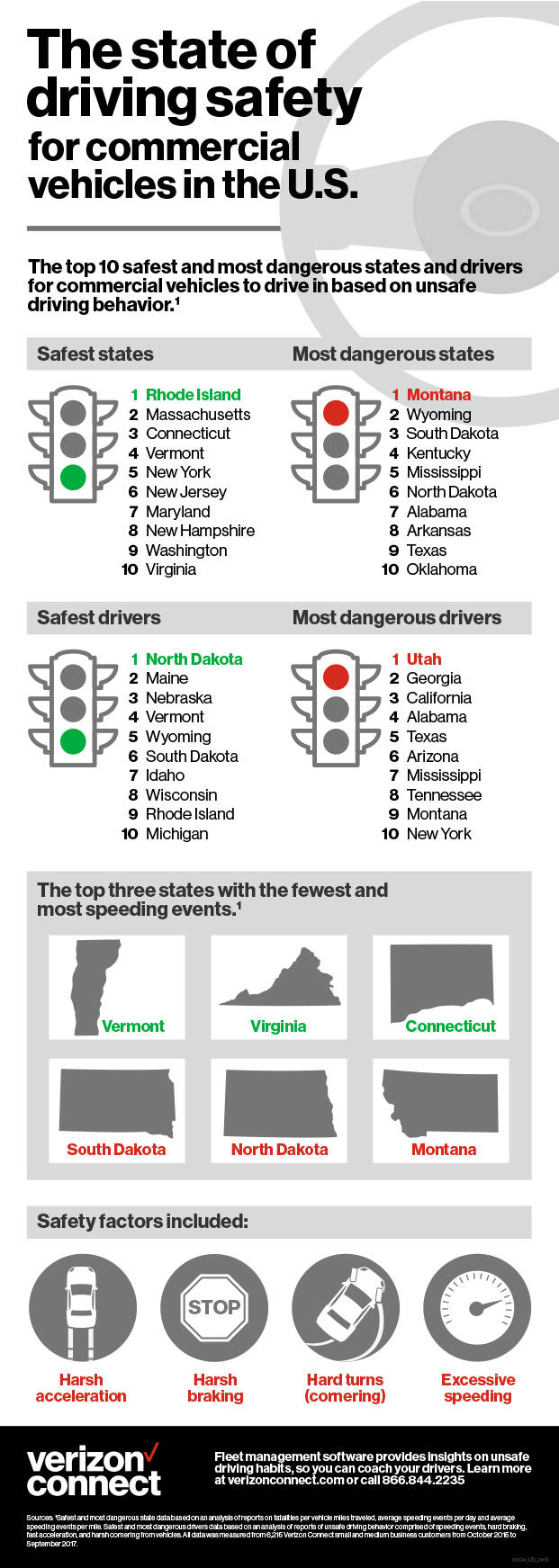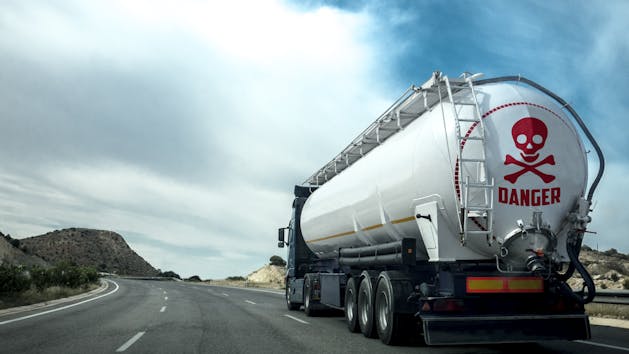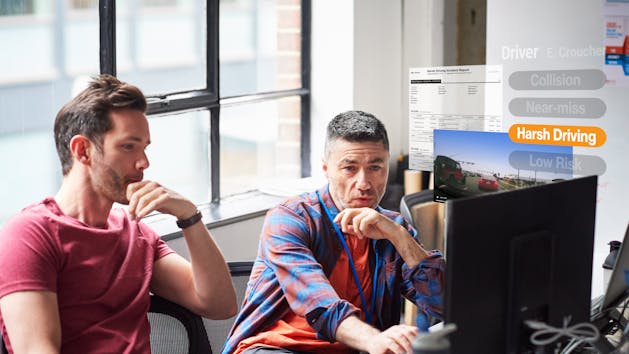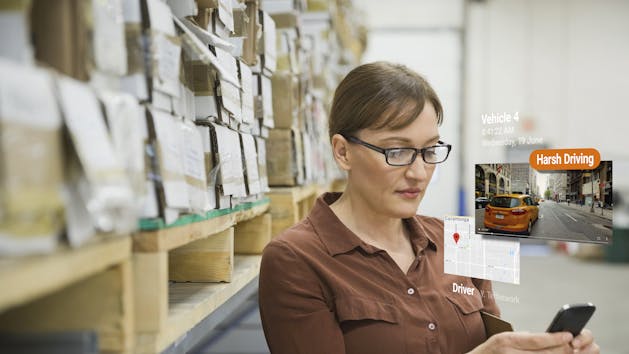Find the right solution for your business with our free Fleet Management Buyer’s Guide.
The “State” of Driving Safety for Commercial Vehicles in the U.S.
What makes one state safer to drive in vs. another? Verizon Connect analyzed every state in the union and found the top 10 safest and most dangerous states and the top 10 safest and most dangerous drivers for commercial vehicles. We took into account a number of factors:
- Harsh acceleration Harsh braking
- Hard turns (cornering)
- Excessive speeding
If you’re familiar with these roads and routes, the results may or may not surprise you. The infographic below breaks down our findings in quick scannable form, but let’s dive in a little more, as well as see how your fleet can stay safe no matter what state they’re in.
Safety first
Did you know: The top six safest states are in the Northeast with the tiniest state in the union, Rhode Island, leading the pack. Virginia sneaks in at number 10. The Northwest takes honors for un-safest states for commercial driving with Montana at the top, followed by Wyoming and South Dakota, and rounded out by Oklahoma at number 10.
When it comes to drivers themselves, there aligns. North Dakota takes top honors for safest driving behavior and Utah has the dubious distinction of having the most dangerous driving behavior. Oddly, while New York makes the list for safest states, it also makes the list for most dangerous driver safety.
Pedal to the metal
Not surprisingly, speeding is one of the biggest indicators of safe driving behavior or lack thereof. Vermont, Virginia and Connecticut all have the fewest speeding events which is why they make the list of safest states and drivers, while South Dakota, North Dakota and Montana have the most speeding events. Likely the wide open roads in these states lead to drivers thinking they can get away with a heavier foot, but the reality is simply more violations and more risk.
So what can be done to help keep commercial drivers safe in these states and any state? We have several tips.
Stay alert
Obviously, a key factor in safe driving is being aware of your surroundings and staying sharp and focused. But driving for hours at a time can take its toll on even the healthiest and most alert person. Simple tips like keeping hydrated, eating healthy snacks, listening to comedy or a good book to keep you entertained and cranking the AC can help your fleet be one of the safest on the road.
Try your hand at gamification
Admit it, there’s something about competing for things that makes us take it more seriously or want to do better. Gamification allows for “leveraging the inherent desire to compete, either with ourselves or others” and is already helping employees achieve company-wide goals. One company actually found it helped them drastically reduce their accidents and driver mishaps.
Change the culture
Simply telling people to drive safer isn’t all that effective. It’s too broad and generic. Narrowing your focus to the driver level and instilling good driving habits can add up to big results. Fleet monitoring and tracking software go a long way in helping shape safety habits and hold your driver and your organization accountable.
Some of the benefits include:
- Detailed maps and easy-to-use dashboards
- Worker and asset safety via the creation of early warning systems
- Driver education tools and in-cab alerts
Download our free ebooks on Fleet Safety and on tips for improving CSA scores to help your fleet always be in a state of safety.

Sources
1Safest and most dangerous state data based on an analysis of reports on fatalities per vehicle miles traveled, average speeding events per day and average speeding events per mile. Safest and most dangerous drivers data based on an analysis of reports of unsafe driving behavior comprised of speeding events, hard braking, fast acceleration, and harsh cornering from vehicles. All data was measured from 6,215 Verizon Connect small and medium business customers from October 2015 to September 2017.
Find out how our platform gives you the visibility you need to get more done.




